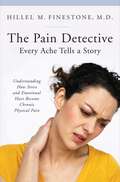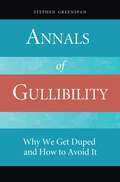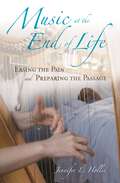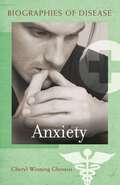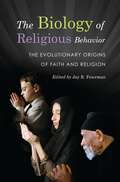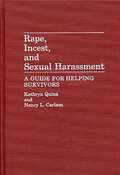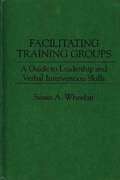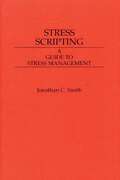- Table View
- List View
Human Performance Enhancement in High-Risk Environments: Insights, Developments, and Future Directions from Military Research (Technology, Psychology, and Health)
by Joseph V. Cohn Paul E. O'ConnorThis book presents a collection of works written by military researchers on the human performance research being carried out in the military.Human Performance Enhancement in High-Risk Environments: Insights, Developments, and Future Directions from Military Research takes the breakthrough work being done by the military on human performance issues and presents it in a way that is applicable to a wider audience of high-risk professions and industries, including police forces, fire fighters, the security industry, military contracting, and more.Human Performance Enhancement in High-Risk Environments focuses on selection, training, safety, and interface design—essential steps in the process of putting the right people in the right positions with the right equipment to handle dangerous work. The book's 16 chapters are each written by military experts, emphasizing lessons learned from their own experiences and research, while highlighting the relevance of their findings to other domains in which highly trained personnel operate complex machinery with high consequences of error.
Toxic Wealth: How the Culture of Affluence Can Harm Us and Our Children (Non-ser.)
by Orla Cashman James A. TwaiteThis volume spotlights the unique problems that often accompany a high-income lifestyle and offers guidelines that can help individuals avoid the pitfalls wealth may bring.Two therapists show how the culture of affluence in America creates unique problems for wealthy adults and children, often resulting in poor psycho-social adjustment, anxiety, low self-esteem, and the inability to have fun. The affluent are under tremendous pressure to achieve. They are subject to a myriad of negative stereotypes that make it difficult for them to have a normal social life. They are taken advantage of, preyed upon, and ridiculed. When they seek professional help for their problems, they may receive little sympathy.This book is a sage and insightful primer aimed at all readers who have some wealth, whether inherited or amassed through personal effort. The consciousness-raising here includes vignettes from the treatment rooms of the authors, who have helped many wealthy individuals and families deal with the fallout from the myths with which our culture burdens them. Specific guidelines on how to deal with problems are presented.
The Pain Detective, Every Ache Tells a Story: Understanding How Stress and Emotional Hurt Become Chronic Physical Pain (The Praeger Series on Contemporary Health and Living)
by Hillel M. FinestoneSure to be welcomed by the thousands suffering persistent pain, this volume explores what physicians often ignore—how psychological and social issues can influence health, illness, pain, and recovery."Pain is everywhere and everyone is talking about it," says Dr. Hillel Finestone, M.D., a researcher and rehabilitation specialist whose work has been featured in publications as diverse as The Lancet, and USA Today. The key to understanding causes and solutions for many apparently mysterious, recurring aches, he explains, lies in understanding the mind-body relationship and the "real meaning" behind symptoms with no immediately obvious cause.Taking the reader into several diagnostic sessions to illustrate what he sees as a "detective" process to find the source of pain, Finestone explains how psychological and social issues can influence health and healing, for better or worse. Low back and neck pain, fibromyalgia and even work related pains are delved into.In addition to vignettes that illustrate the ideas discussed and show dramatic incidences of how healing the mind can also heal the body, Finestone uses unique and useful diagrams which explain how mind and body are physiologically connected and reactive to each other. In these pages, readers can follow Dr, Finestone through patient sessions and understand, step by step, how the "pain detective" works to help his patients—and perhaps his readers, too—find lasting relief.
Sustenance and Hope for Caregivers of Elderly Parents: The Bread of Angels (The Praeger Series on Contemporary Health and Living)
by Gloria G. BarsamianThis volume provides a practical exploration of one of today's most complex and challenging issues—the care of an elderly parent—with an innovative approach that emphasizes how rewarding the caregiver/care-receiver relationship can be.For anyone facing this often overwhelming situation, Sustenance and Hope for Caregivers of Elderly Parents: Bread of Angels offers a wealth of insights from experienced caregivers, extraordinary personal stories, and most importantly, reassurance and support. It is a refreshing new vision of the positive potential for caregiving and the rewards that come with evolving relationships between adult children and their parents.Gloria G. Barsamian's remarkably perceptive new volume dispels the myth that caretaking is a thankless burden. Like no other work, it captures the emotions of today's millions of caregivers, as well as care-receivers, spouses, and grandchildren. A longtime social worker, Barsamian shows how old ways of thinking about caregiving can be replaced with new, healthier possibilities that enrich the lives of caregivers and care-receivers.
Finding Meaning in Life, at Midlife and Beyond: Wisdom and Spirit from Logotherapy (Social and Psychological Issues: Challenges and Solutions)
by David GuttmannHaving been mentored by Viktor E. Frankl, the founder of logotherapy, Emeritus Professor David Guttmann authored this book so general readers may understand this approach to finding meaning in life at the point when most of us begin deeply wondering over that question, at midlife and beyond. Especially in this day and age of multiple demands on our time and seemingly non-stop obligations, we too often find that it is only when the dust settles, after a work day or work week, or even after retirement, when we begin to wonder: What is the meaning of life? The purpose? This book is a new millennium venture into those questions and their answers using logotherapy, written by a sage understudy who recalls Frankl, with his logotherapy, as the epitome of his theory even at 80 years old, wise and witty, exuding an energy, enthusiasm and youthful spirit that belied his years by decades. Aging does not diminish our power, our energy, and our quest for life, but reshapes it with new understandings, goals, and needs. But, says Guttmann, we live in a technical and machine-based world now, in which there is a danger of losing our souls. Here, readers find a new, creative perspective on aging and a fresh spiritual outlook.This book will be of interest not only to general readers, especially those at midlife and beyond, but also to their families, friends, and students or professionals in the helping professions. This unique work provides knowledge to find meaning in life derived from the fields of philosophy, psychology, religion and gerontology, with case illustrations and vignettes to give readers both intellectual pleasure and practical guidance.
Emotional Exorcism: Expelling the Four Psychological Demons That Make Us Backslide (Contemporary Psychology)
by Holly A. Ph.D.Emotional Exorcism: Expelling the Four Psychological Demons That Make Us Backslide offers a powerful, research-grounded model and tools to help us overcome our problems without beating up on ourselves for backsliding to negative habits.Dr. Holly Hunt's groundbreaking work, Emotional Exorcism, offers all those in emotional distress a new way to face one's demons and banish them once and for all. For anyone unable to pull themselves out of sadness, anxiety, anger, or addictive behaviors, it is a potent and practical strategy for expelling psychological demons and stopping the feeling of failure.Drawing on years of experience in private practice with clients of all backgrounds, Dr. Hunt shows how earlier life experiences can create a core of negative belief she calls the "Master Demon," as well as self-sabotaging thoughts and behavior patterns called the "Four Soldier Demons." These generate emotional negativity within us, providing a power source for the demons. Dr. Hunt then provides a practical, user-friendly, research-grounded model to change those self-sabotaging thoughts, behaviors, and feelings without the self-defeating burden of battling ourselves. Through a variety of tools, she empowers readers to separate from, stop feeding, and effectively exorcize our psychological demons.
Annals of Gullibility: Why We Get Duped and How to Avoid It (Non-ser.)
by Stephen GreenspanThe first book to provide a comprehensive look at the problem of gullibility, this groundbreaking work covers how and why we are fooled in areas that range from religion, politics, science, and medicine, to personal finance and relationships. First laying the groundwork by showing gullibility at play in the writings of historic authors we all know, developmental psychologist Stephen Greenspan follows with chapters that describe social duping across the gamut of human conduct. From people who pour bucks into investment scams, to those who follow the faith of scientologists, believe in fortunetellers, or champion unfounded medicine akin to snake oil, we all know someone who has been duped. A lot of us have been duped ourselves, out of naive trust. It's not a matter of low intelligence that moves us to, without evidence, believe the words of politicians, salesmen, academics, lawyers, military figures, or cult leaders, among others. Greenspan shows us the four broad reasons we become drawn into gullible behavior, and he presents ways people can become less gullible.Greenspan takes us into the vast realm of gullibility from the fictional Pied Piper to the historical Trojan Horse, then through modern-day military maneuvers, political untruths, police and criminal justice scams, and financial and love lies. While there have been earlier books focused on liars and manipulators of all sorts, this is the first to focus on the gullible who are their victims, and how the gullible can become less likely to be taken again.
Music at the End of Life: Easing the Pain and Preparing the Passage (Religion, Health, and Healing)
by Jennifer L. HollisA practicing music thanatologist provides an insider's history of this remarkable profession, which combines music, medicine, and spirituality to help the terminally ill and their families face the end of life.Reflecting on the author's experiences as a music-thanatologist, Jennifer Hollis's Music at the End of Life: Easing the Pain and Preparing the Passage is an enlightening and emotional examination of the ways in which the experience of dying can be transformed with music.Music at the End of Life highlights the unique role music has come to play in hospice and palliative medicine. Jennifer Hollis interweaves narrative memoir, the personal experiences of fellow music-thanatologists and caregivers, and extensive research to demonstrate the transformative power of music when curing is no longer an option. Through story after unforgettable story, Hollis offers a new vision of end-of-life care, in which music creates a beautiful space for the work of letting go, grieving, and saying goodbye.
Anxiety (Biographies of Disease)
by Cheryl Winning GhinassiThis engagingly written survey covers the history of anxiety disorders and current approaches to their definition and treatment.Anxiety disorders are significant mental health illnesses that impair lives and cost society millions of dollars in health care expenses and lost productivity. Greater awareness of anxiety disorders is essential for both the general public and health professionals if those who suffer from them are to be identified, receive proper treatment, and have a chance at leading fulfilling lives.To that end, Anxiety begins with a historical overview of the ways in which anxiety disorders have been understood, from the prehistoric era until the present time, examining the disorders from the perspectives of conceptualization, classification, research, and treatment. Subsequent chapters examine these themes in light of our current understanding and approaches to anxiety disorders. Current diagnostic and assessment methods are discussed, as are modern treatment options. The book concludes with a survey of the future directions in research for the understanding and treatment of anxiety disorders.
Speaking of Death: America's New Sense of Mortality (Psychology, Religion, and Spirituality)
by Michael K. BartalosIn the post-9/11 moments, months, and years, America has come to develop a new mortality awareness. Death, and our understanding that it can be sudden and is certainly inevitable, is being talked about more than ever before. As the team in this volume shows through groundbreaking research, surveys, interviews, and vignettes, death awareness has grown strong, and has changed the way we think and act, not only in relation to ourselves and our loved ones, but in relation to society overall. Those changes include nuances from increases in the number and size of college courses focused on death, rapid growth of death books, death photography, television shows dealing with death, as well as the recording and dissemination of death videos from those that show family members dying peacefully to the execution of terrorists or their captives. Impromptu street creations to memorialize common people who have died have emerged, as have new ways to dispose of dead bodies, including blasting ashes into space or placing them under the sea or giving them a green resting place in a natural forest. Our means of grieving, coping, and beliefs about afterlife have been altered, too.This work also includes a look at cosmologists and physicists who have revised their theories on humanity's legacy when our world meets a fateful end, who propose a means by which mankind's achievements might survive indefinitely, transporting from one universe to another without violating the known laws of physics. This book will intrigue all with an interest in considering not only death and how 9/11 changed America's views on and beliefs about it, but also considering what could lie beyond that end for all of us.
The Biology of Religious Behavior: The Evolutionary Origins of Faith and Religion (Non-ser.)
by Jay R. FeiermanOffers a fresh and detailed take on the evolution of religious behavior from a biobehavioral perspective, promoting a new understanding that may help build bridges across the religious divide.There has been much recent interest in the study of religion from the perspective of Darwinian evolution. The Biology of Religious Behavior: The Evolutionary Origins of Faith and Religion offers a broad overview of the topic, written by internationally recognized experts. In addition to its primary focus on religious behavior, the book addresses other important aspects of religion, such as values, beliefs, and emotions as they affect behavior. The contributors approach the evolution of religion by examining the behavior of individuals in their everyday lives. After describing various religious behaviors, the contributors consider the behaviors with reference to their evolutionary history, development during the lifetime of the individual, proximate causes, and adaptive value. Happily, this foray into understanding religion from a biobehavioral perspective demonstrates that, at the biological and behavioral levels, what unites the different religions of the world is far greater than what divides them.
Fooling Ourselves: Self-Deception in Politics, Religion, and Terrorism (International Contributions in Psychology)
by Harry C. TriandisSelf-deception occurs because we often see the world the way we would like it to be, rather than the way it is. Our brains so long for things the way we want them, we might not even be aware we are fooling ourselves, explains author Harry Triandis, a widely known Professor Emeritus of Psychology. Across cultures and around the world, self-deception is a phenomenon that has subtle and profound effects on everyday life, explains Triandis, also former president of the International Association of Cross-Cultural Psychology. In this work, he not only explains how and why self-deceptions occur in three areas - politics, religion, and terrorism - but also how to recognize and reduce the frequency of fooling ourselves.Insights here include consideration of personal and societal self-deceptions, as well as extensive understanding of how politics, ideologies, and religions can frame reality for each of us in such a way that it is, in our minds, warped so the stage is well-set for self-deception. This text will be of special interest to general readers drawn to politics and religion, as well as scholars of psychology, anthropology, and sociology.
How Psychology Applies to Everyday Life (Non-ser.)
by Charles I. Brooks Michael A. ChurchDo violent video games lead to violence? Does spanking children make them unstable? Can the alcoholic drink socially? Do children raised by gay parents turn out OK? Are eyewitness accounts accurate? Is winter a cause of depression? Does cell phone use compromise driving ability? These questions and others from the world of psychology touch on our everyday experiences, and are also areas of research that many students want to explore further. Psychology Applied to Everyday Life provides the reader with a portal to discovering what psychologists know about these questions. For each question, the authors review a recent research article and provide a straightforward answer to the question. The writing is conversational, informal, and non-technical. The authors deal with topics in a straightforward manner, allowing readers to develop an understanding of each topic.Psychology Applied to Everyday Life divides its 59 questions into seven fun sections:• Sex, Booze, and Other Fun Things• Raising the Little Ones• Cops, Robbers, and Forensics• Memory and Intelligence• Anxiety, Stress, and Staying Cool• Odds and Ends• Notes from the ShrinkFor those interested in further investigation into a topic, the authors provide additional analysis and references. In addition to reviewing recent research, the authors consider questions from the practice of clinical and counseling psychology. Issues in this section are illustrated with actual case studies from the authors' files, and include questions concerning how best to work with couples, whether psychotropic medications (such as anti-depressant and anti-anxiety agents) are effective, and recent developments in counseling techniques.
Voices from Post-Saddam Iraq: Living with Terrorism, Insurgency, and New Forms of Tyranny (Praeger Security International)
by Victoria FontanEven today, most Americans can not understand just why the fighting continues in Iraq, whether our nation should be involved there now, and how we could change our tactics to help establish a lasting peace in the face of what many fear will become a full-fledged civil war. In the book at hand, Victoria Fontan - a professor of peace and conflict studies who lived, worked and researched in Iraq - shares pointed insights into the emotions of Iraq's people, and specifically how democratization has in that country come to be associated with humiliation. Including interviews with common people in Iraq this work makes clear how laudable intentions do not always bring the desired result when it comes to international conflict and cross-cultural psychology. For example, Fontan explains, one might consider the comment of a young Shiite: The greatest humiliation of all was to see foreigners topple Saddam, not because we loved him, but because we could not do it ourselves.This gripping text is focused on a new and growing area of human psychology - humiliation studies. In it, this leader at the United Nations-mandated University for Peace spotlights aspects of U.S. actions - and Iraqi perceptions - that have fueled ongoing conflict and left some increasingly outspoken residents of the U.S., and the rest of the world, demanding that foreign forces be withdrawn and the Iraqis left to their own accord. The work examines issues including how and when the Iraqis began to see the United States, as not a liberator but as an occupier; how both Abu Ghraib and our ensuing handling of the scandal heightened Iraqi humiliation and fighting; how we've fueled the ethno-religious unrest that still rages today; and how the Post-Saddam elections paved the way for civil war. Fontan also describes the role of women in Iraq who may ultimately be an important key to peace and explains her views on the new role the U.S. may play to better help establish peace.
Female Sexual Predators: Understanding Them to Protect Our Children and Youths (Forensic Psychology)
by Karen A. DuncanThis unprecedented look at female sexual predators explains why and how they prey on our children and youths and what adults—and children and youths themselves—should understand to prevent victimization.In Female Sexual Predators: Understanding and Identifying Them to Protect Our Children and Youths, social worker and therapist Karen A. Duncan helps adults be proactive so children will not fall prey to this violation. Vignettes pulled from news headlines and interviews with female sexual predators Duncan has encountered in her own practice are used to help readers understand these crimes and the women who commit them, as well as the impact these crimes can have on victims.The women profiled were in positions of authority at churches, schools, sports institutions, and the home. Victims explain how these women exploited their positions of trust, planned their crimes, groomed their victims, deceived adults into not detecting their behavior, and how they did not stop even when they recognized the danger and the harm to themselves and their victims. Duncan addresses the issue of maternal sexual abuse answering questions about mothers who willingly sexual abuse their own children and at times commit child sexual abuse with other adults, as well as women who sexually abuse girls. Four types of female sex offenders are presented within the emerging research on this topic, along with questions regarding assessment, treatment, and management of female sex offenders in the community. It also addresses the controversial issues of female pedophilia and female sexual deviance within the context of what we know about human sexuality.
The Psychology of Conflict and Combat
by Ben ShalitShalit draws on the research he conducted as field psychologist in the Israeli military to offer an original behavioral model of combat that accounts for the fighting potential of an individual or group. His model is based on the appraisal process that the individual undertakes in combat conditions to assess a situation, whether it concerns him or not and regardless of his role. It is through this process that the individual makes a judgment, taking into consideration his past experience, knowledge, and expectations, that in turn leads to a course of action. Shalit pinpoints and describes specific aspects of the psychology of combat and conflict including the motivation to act in combat with special reference to the aggression drive; the definition of an enemy and the effects such appraisals have on behavior; the situational factors in heroic acts; and discipline and its affects on combat efficiency.
Rape, Incest, and Sexual Harassment: A Guide for Helping Survivors
by Nancy L. Carlson Kathryn QuinaA working guide to the treatment of survivors of sexual victimization, this book treats rape, incest, and harassment as related forms of sexual abuse. It reviews present literature on the long-term effects of sexual assault and considers the services and support that survivors require. Covering a wide range of issues and treatment approaches, focus is placed on the older adolescent and adult. The phases of recovery followng sexual abuse are described together with the type of assistance most appropriate at each phase. The authors provide numerous case studies and emphasize the individuality of both survivor and response. This guide should be used by both professional and layperson to help the sexually abused transcend feelings of victimization.Rape, Incest, and Sexual Harassment discusses the issues raised by victimization. It then deals with the immediate aftermath of sexual abuse focusing on crisis intervention and advocacy with respect to emotional, medical, and legal needs. One section, devoted to counselors working with long-term effects on survivors, matches interventions to the individual client's needs and offers models for counseling frameworks. Special needs are also addressed. The book concludes with a look at the larger social problems associated with abuse and violence.
Acquaintance and Date Rape: An Annotated Bibliography (Bibliographies and Indexes in Women's Studies)
by Jennifer Dziuba-Leatherman Jane Stapleton Denziel Sally K. Ward Carrie L. YodanisThis annotated bibliography reviews scholarly work on acquaintance and date rape published in recent years. Acquaintance rape research has grown significantly since the mid-1980s, and it is often argued that acquaintance rape is a common occurrence, especially on college campuses. It is also argued that this type of sexual assault is very different from stranger rape, principally because of the socially defined and accepted nature of the relationship between the victim and the perpetrator.Works specifically on acquaintance or date rape are included, as well as earlier works that led to the emergence of the separate conceptual category of acquaintance rape. Each work is summarized, and the annotation includes a statement of the purpose, the method, and the major findings of the work. Separate chapters are devoted to the incidence of acquaintance rape; its social correlates; and its causes, effects, treatment, and prevention.
Facilitating Training Groups: A Guide to Leadership and Verbal Intervention Skills
by Susan A. WheelanMost trainers rely on trial and error as the only means of improving facilitation skills. This definitive text furnishes a comprehensive framework for determining the best interventions to use in a given group situation. The trainer is presented with strategies for assisting the individual to establish an attainable goal, develop a strategy for change, and implement and evaluate that strategy during and following the life of the group. Both personal and professional development groups are addressed in the model. Most current literature describes how to design management training and human relations group. This text goes a step further by providing a framework for intervening on a moment-by-moment basis to ensure group goal achievement.Facilitating Training Groups provides clear descriptions of three primary models--T-groups, personal growth groups, and skills training groups. Their goals, theoretical underpinnings, and required leadership style are explored. The book focuses on what trainers say and do during the life of a group to facilitate the accomplishment of the goals of a particular model. Trainers learn a process for deciding what interventions to use in different circumstances and models. Practice exercises assist the reader in assimilating the material. This book is particularly relevant for those studying human resources, human resource training, psychology, sociology, and social work.
Stress Scripting: A Guide to Stress Management
by Jonathon C. SmithStress Scripting presents a unique and tested program of stress management. Its basic idea is that writing thought and action scripts for stress situations can enhance effective coping. Comprehensive, scholarly, and very accessible, it is unlike any other stress management book. With a focus on assertiveness training, coginitive restructuring, stress inoculation training, and relaxation, this book is an extremely versatile tool for therapy, workshops, university instruction, business consultation, and self-help groups. Innovative topics include: the link between assertiveness, defense, and coping; the similarity of problem solving and negotiation; relapse prevention; the phases of stress and stress inoculation training coping philosophies; and cognitive-behavioral relaxation training.Divided into four parts, Stress Scripting is carefully designed to be used either in its entirety, or each chapter separately. Part I presents the basic ideas of stress scripting: defense and coping, assertiveness, thinking and stress, cues, reinforcement, and the phases of stress. It concludes with an option to contract for behavior change. Concentrating on behavior change, Part II introduces assertiveness scripts, relapse prevention, problem solving and negotiation, desensitization, and the coping philosophy. Part III presents an optional cognitive-behavioral relaxation training program. Stress Scripting can be integrated with whatever approach the user prefers. Part IV concludes this volume with an extensive series of individual and group exercises.
Odor Sensation and Memory
by Trygg EngenOur sense of smell, as Trygg Engen reminds us early in this definitive work, has been neglected as a research area. This neglect belies the very critical role that the sense plays in human adaptation to the environment through the monitoring of odors. Smell is learned through experience and results, Engen maintains, in a schema of memory system that enables individuals to process and categorize odors. There are closer relationships between the individual detecting an odor, the circumstances or environment, and the reaction of pleasure or aversion than with the other senses. When future occasions present the same or similar odors, memory will bring back the early experience and directly affect the reaction to the new stimuli. Engen sees odor perception as mainly psychological, unlike the traditional approach which sees the sense largely as an innate mechanism with a direct physiological basis. The research underlying this book is the most current in sensory cognition, reminding the reader of the importance of the sense of smell through examples of what deprivation entails.The author develops an appreciation of the odor-sensing ability mankind has and explores the uses to which that sense is applied. The ability to relate past to present perception--odor memory--and the gradations of odor impact are discussed, as well as the engaging questions of fragrances effects on behavior, odors and sexuality, mother-infant bonding, and pollution. This book is essential reading for all who work in areas relating to sensory perception and cognition.
Handbook for Assessing and Treating Addictive Disorders
by John Levitt Douglas Ruben Chris E. Ph.D.This comprehensive reference offers a fresh, integrative perspective on the assessment and treatment of addictive disorders. The work is organized into five sections, which treat theories of addiction, the diagnosis and evaluation of addictive behavior, treatment approaches, addiction among special populations, and clinical and legal issues concerning substance abuse professionals. The broad scope of the handbook encompasses alcoholism, drug addiction, eating disorders, and smoking. Theory is consistently used to illuminate practice, resulting in a valuable overview of the field.Within each section, essays by contributors discuss the most important issues and developments in the diagnosis and treatment of addiction. The opening essays establish a solid theoretical foundation by outlining behavioral, familial, and psychoanalytical explanations for the origins of addictive behavior. The later essays build on that base by overviewing diagnostic and treatment issues concerning addiction among Native Americans, the elderly, victims of traumatic brain injury, adult children of alcoholics, and teenagers. Useful appendixes list additional sources of information and describe certification for substance abuse professionals in each state. Psychologists, psychiatrists, and substance abuse counselors will find this handbook a necessary addition to their professional libraries.
The Childhood Hand that Disturbs Projective Test: A Diagnostic and Therapeutic Drawing Test (Non-ser.)
by Roseline DavidoThe Childhood Hand that Disturbs (CHaD), a new projective test, is a diagnostic and therapeutic tool that is broadly applicable, but particularly effective with abused, depressed, and suicidal subjects. While the CHaD has the advantage of being quick and easy to administer--it takes an average of ten minutes to perform--it is reliable and applicable to both young and old. It is a useful complement to traditional batteries such as the Rorschach and Draw-a-Family, and self-assessment questionnaires. What makes the CHaD different is that it is a free drawing exam, and one that taps one of the most highly symbolic parts of the body: the hand. The CHaD has been tested on normal and pathological individuals for over ten years. Clear guidelines can now be set down for administration, testing, and interpretation. Obviously, a projective test can never be more sensitive than the professional who uses it, but it is Davido's intention that the theoretical underpinnings and her presentations of case studies along with the drawings will help other practitioners deal better with the needs of their patients.
The Professional Practice of Psychology (Developments in Clinical Psychology)
by Bloomsbury PublishingThis volume provides practical information concerning the functions of professional psychologists, the settings in which they work, and legal, ethical, and insurance issues affecting professional practice. This source book is suitable for both introductory and clinical courses, as well as advanced seminars dealing with professional issues in clinical psychology. It is also an excellent resource volume for practicing professional psychologists.
Prudent Decision Making in an Imprudent World: Better Decisions at Home and Work (Non-ser.)
by Patrick GouldA practical guide to making better decisions in all aspects of life, based on extensive research and a wide range of historic and current examples.Combining clearly communicated research-based principles, a wealth of practical advice, and dozens of historic and contemporary examples of decision making (good and bad), Patrick Gould's Prudent Decision Making in an Imprudent World: Better Decisions at Home and Work gives readers a fresh new way to look at the way we make choices.What makes Gould's book both authoritative and compelling is its distinctive foundation—prospect theory—derived from Amos Tversky and Nobel laureate Daniel Kahneman's landmark research on "neuro-economic" decision making. Through the prism of prospect theory—which explains why people make conservative decisions in some instances and reckless decisions in others—Gould provides practical pathways to sound, timely judgments about relationships, family matters, careers, finances, and more. Time and again, throughout this concise but richly rewarding book, Gould demonstrates that understanding how and why people make choices is the first step toward making the best possible choices for ourselves.


